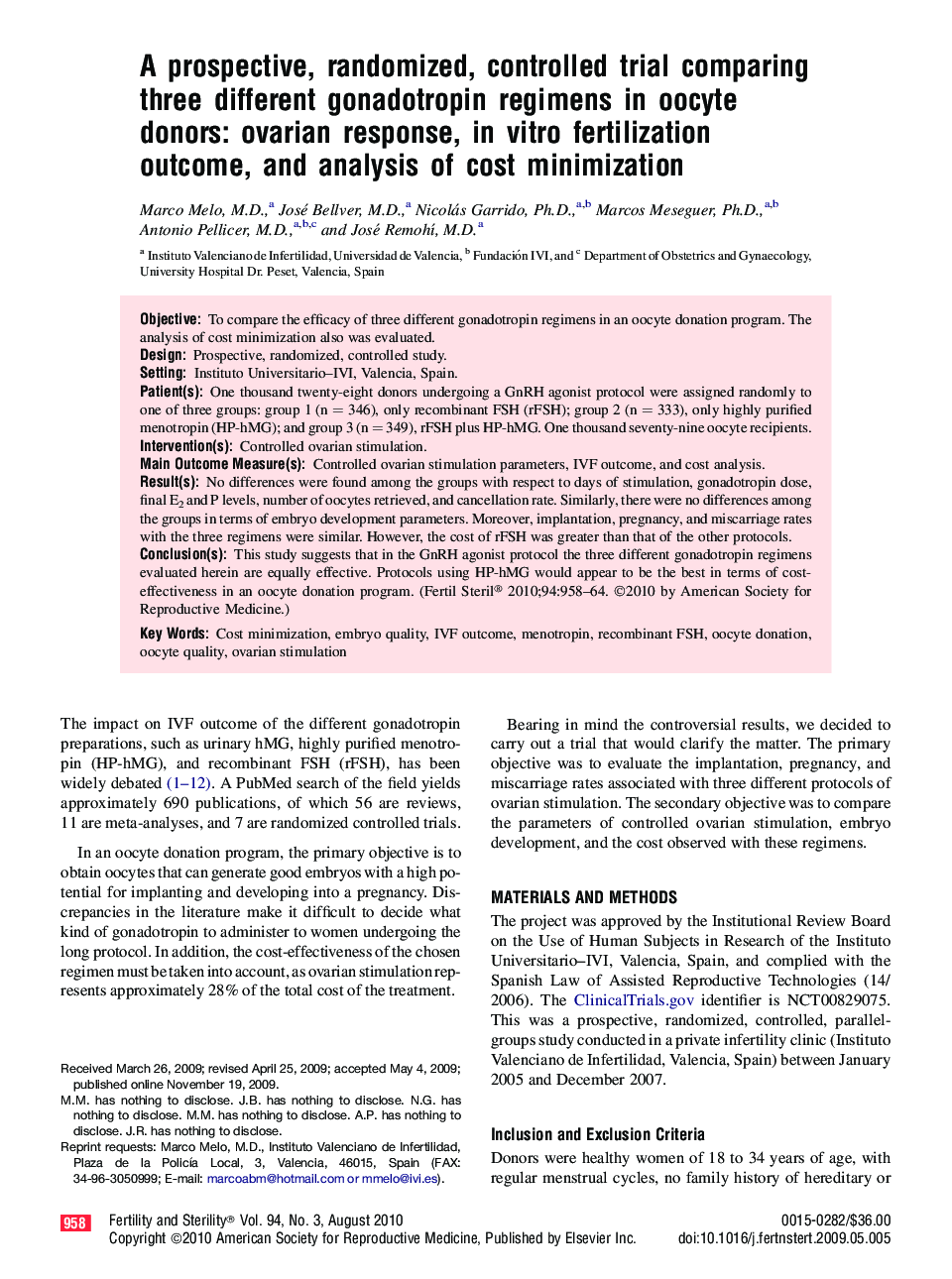| Article ID | Journal | Published Year | Pages | File Type |
|---|---|---|---|---|
| 3933134 | Fertility and Sterility | 2010 | 7 Pages |
ObjectiveTo compare the efficacy of three different gonadotropin regimens in an oocyte donation program. The analysis of cost minimization also was evaluated.DesignProspective, randomized, controlled study.SettingInstituto Universitario–IVI, Valencia, Spain.Patient(s)One thousand twenty-eight donors undergoing a GnRH agonist protocol were assigned randomly to one of three groups: group 1 (n = 346), only recombinant FSH (rFSH); group 2 (n = 333), only highly purified menotropin (HP-hMG); and group 3 (n = 349), rFSH plus HP-hMG. One thousand seventy-nine oocyte recipients.Intervention(s)Controlled ovarian stimulation.Main Outcome Measure(s)Controlled ovarian stimulation parameters, IVF outcome, and cost analysis.Result(s)No differences were found among the groups with respect to days of stimulation, gonadotropin dose, final E2 and P levels, number of oocytes retrieved, and cancellation rate. Similarly, there were no differences among the groups in terms of embryo development parameters. Moreover, implantation, pregnancy, and miscarriage rates with the three regimens were similar. However, the cost of rFSH was greater than that of the other protocols.Conclusion(s)This study suggests that in the GnRH agonist protocol the three different gonadotropin regimens evaluated herein are equally effective. Protocols using HP-hMG would appear to be the best in terms of cost-effectiveness in an oocyte donation program.
